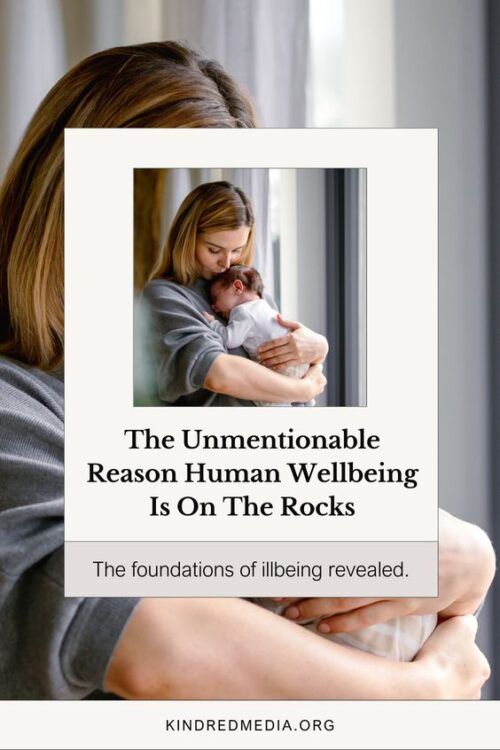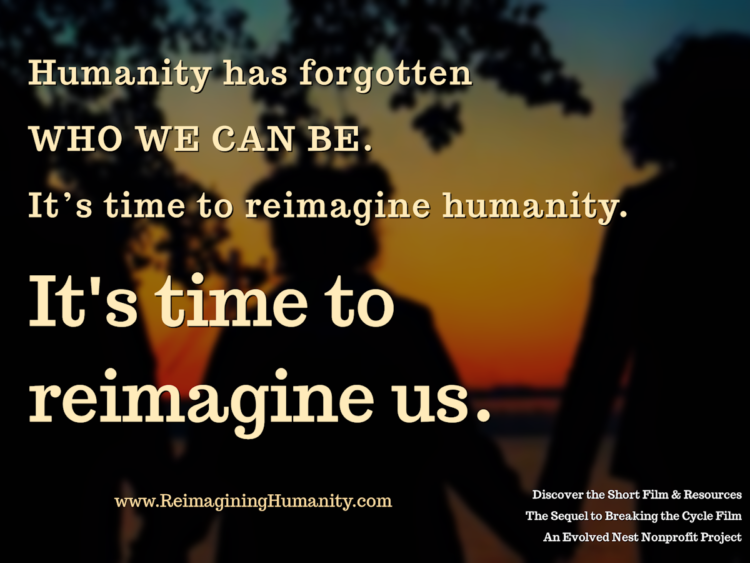Which Kind of Mindfulness?
Only one kind of mindfulness helps alleviate mental despair.
According to Ellen Langer (author of Mindfulness), mindlessness is a form of limited perception characterized by being trapped in preconceived categories, automatic behavior, and a single perspective. One is unable to respond to the unique context of the present moment. Iain McGilchrist might call this a left-brain governed orientation. The alternative perceptual orientation is governed more by right-brain-governed processes allowing openness to uniqueness.
The initial orientation one brings to a situation creates a winner-takes-all scenario. So if you start out by categorizing what you see—i.e., perceiving the Other as a member of a category (e.g., oak tree or pine tree; smarter or handsomer than me; White person or not; of my religion or not) you get caught in the logical-categorizing mode—just like when you start editing during a brainstorming session, it’s next to impossible to return to free flowing creativity. Once it has taken over the perceptual-cognitive system, it’s hard to get out of the categorizing mode. Often when this happens, you are unable to perceive and act intelligently and instead will follow previously practiced scripts, mindlessly. Westernized schooling emphasizes the development of the logical-categorizing mode. Mindfulness training offers the development of a different mode.

Programs on mindfulness have been implemented in schools in order to help students improve their mental health. In a recent article about mindfulness taught in K-12 schools, mindfulness training involved directing attention to the present moment, to inner experience (thoughts, feelings, breathing, physical sensations) and to outer experiences (stressors, relationships) and to observe them responsively with curiosity and kindness. The goal in one study was to familiarize teenagers with skills to use every day like control of attention, thoughts, feelings, and behavior. However, the intervention with this approach tested across over 25,000 students, did not improve mental health. Why not?
The approach demonstrates a severe misunderstanding of what mental health requires and what kind of mindfulness helps heal mental distress.
Mental distress is a form of psychic isolation, a solitary confinement in despair of one kind or another. Depression is a form of sickness behavior in which an animal withdraws to heal from trauma. Thus, to focus further on the self through self-focused mindfulness is no remedy. If one is lost in the loop of self-despair, focusing on oneself in the present moment is gasoline on the fire. Mindfulness of the self (feelings, body senses) can make things worse as the rope tightens further to tie the person to their misery, constricting their eagerness for living. The individual goes deeper into the haunted house of a disconnected self.
For the mentally ill, the sense of the self-in-relation must be restored. Because of sickness behavior, the self has been starved of existential nourishment from the Other.
We were all connected to mother in the womb, so we have a memory of that feeling, no matter what happened after birth. The primary source of meaning, of energy, of value comes from outside the infant—Is this a good place to be? Is the Other good? Am I good? For the nested newborn, affirmative answers come from connecting in a new way with mother in the hours after birth, and thereafter from connecting to a community of nurturers. The infant’s psyche/spirit flourishes from the loving attention and ongoing connectedness that our species evolved to provide through the evolved nest.
In contrast, conquistador practices impair the infant’s ongoing sense of connectedness. Each break in relational presence and responsiveness to needs puts a microtear in the spirit. Routine and extensive imposed distress ‘for the child’s own good’—e.g., separation from mother after birth, scheduled feeding and sleeping, sleep training, physical isolation, stranger daycare—creates wounds carried forward in neurobiological structures that form the foundation of the psyche. Tear after tear of undercare (lack of evolved nest experience) leads to a vastly wounded spirit or psyche, easily imbalanced and made ill. The body and the unconscious mind are engraved with these early experiences and carried forward as physiological dysregulation and as unconscious messages of self-incrimination that emerge strongly under situations of stress. Self-oriented mindfulness is the last thing a distressed psyche would desire.
Conquistador practices are part of a capitalist-consumerist society like the USA, where individualism is taken for granted and forced on everyone, including babies. One is supposed to (impossibly) ‘pull yourself up by your bootstraps!’ [bootstraps are the loops on the back of a boot that help you pull it onto your foot]. In fact, individualists often cast a suspicious eye on too much relational connection—it kind of looks like, heaven forbid, co-dependency. This social atomism, Mary Midgley’s term, is pervasive and part of the myth of a dog-eat-dog world. It’s a political idea not born out by the evidence of Nature’s gift economy and humanity’s deep social nature and need for social connection. (Yes, there is some competition in Nature but it is the frosting on the vast cake of cooperation, to use my analogy.) We force babies into a set point of individualistic loneliness (making them susceptible to psychic despair).
Self-oriented mindfulness training (me and my feelings) fits right into the individualistic philosophy. Instrumental mindfulness does too—i.e., mindfully attending to actions towards things such as putting the lid back on the jar properly, locking the car door, turning off the lights.
A different kind of mindfulness is needed for the depressed and anxious, one that promotes the mode of intelligent presence.
 Intelligent presence means the schemas or concepts one carries from prior experience are in the background not the foreground. One’s spirit is also clear of preoccupations with goals, resentments, or worries, enabling one to fully embrace the experience of the Other, whether a tree being or a human being. “Without a mind free from preconceived ideas, we cannot penetrate reality” (Thich Nhat Hanh, 2001, p. 60). Intelligent presence resonates with the living sentience one faces, allowing for dynamic shifting perspectives and behavior grounded in the uniqueness of the present situation. This is governed by the right hemisphere. Intelligent presence is firmly relational, not stuck in a detached, observer mindset toward self or object, what I call ivory-tower thinking.
Intelligent presence means the schemas or concepts one carries from prior experience are in the background not the foreground. One’s spirit is also clear of preoccupations with goals, resentments, or worries, enabling one to fully embrace the experience of the Other, whether a tree being or a human being. “Without a mind free from preconceived ideas, we cannot penetrate reality” (Thich Nhat Hanh, 2001, p. 60). Intelligent presence resonates with the living sentience one faces, allowing for dynamic shifting perspectives and behavior grounded in the uniqueness of the present situation. This is governed by the right hemisphere. Intelligent presence is firmly relational, not stuck in a detached, observer mindset toward self or object, what I call ivory-tower thinking.
Wellbeing is restored by relational connection to not-self—a relational mindfulness. All three kinds of mindfulness, personal, instrumental, and relational, address attentional processes, but the foci differ. Relational mindfulness training is about attending to Otherness. This may need to start small and with non-human entities: ‘Look at the beauty of the flower, the tree. Take time to find a ‘sit-spot’ in Nature that you return to regularly to be still and open your senses. Nature is full of relationships. Attend to them. You are never alone.’
Tonics for the spirit are relational. To escape the well of despair, we need Others to help draw ourselves out. Being enraptured by the Other, whether music, the aurora borealis, ocean waves, forest bathing, or laughing merrily with a friend helps us feel that we are part of the Whole. Experiences of transcendence can heal the alienated, despairing self. The arts are particularly helpful in providing opportunities, including for deep play, in which we feel exaltation as we receive the spiritual touch of the Other.
To need one another is a strength, Midgley tells us, because it points us outwardly to the rich stores of Otherness all around us, their beauty and complexity fostering our own. Being-for-the-Other helps us realize ourselves. We become who we are through others—the concept of Ubuntu. Our full human nature is a social one.
Relational mindfulness is not just for the despairing, it is for everyone. As with all entities on earth, our species-normal nature calls us to be competently committed to being-with the Other. This means that we reach out to those displaying sickness behavior and encourage them with our mindful relational attention, our intelligent presence. We help them out of the muck of misery and back into the flow of relation.
References
Ackerman, D. (2000). Deep play. Vintage.
Freeman, M. (2014). The priority of the Other: Thinking and living beyond the self. Oxford.
Hanh, T.N. (2001). Essential Writings. Orbis.
Krishnamurti, J. (1987). The awakening of intelligence. Harper & Row.
Langer, E. (1989). Mindfulness. Reading, MA: Addison Wesley.
Levinas, E. (1969). Totality and infinity. An essay on exteriority (Trans A. Lingis). Pittsburgh, PA: Duquesne University Press.
McGilchrist, I. (2009). The master and his emissary: The divided brain and the making of the western world. New Haven, CT: Yale University Press.
Midgely, M. (2010). The solitary self: Darwin and the selfish gene. Durham, England: Acumen.
Narvaez, D. (2014). Neurobiology and the development of human morality: Evolution, culture and wisdom. W.W. Norton.
Narvaez, D. (2024). Returning to evolved nestedness, wellbeing, and mature human nature, an ecological imperative. Review of General Psychology, 28(2), 83-105. https://doi.org/10.1177/1089268023122403
Ngomane, M. (2020). Everyday Ubuntu: Living better together, the African way. Harper.



